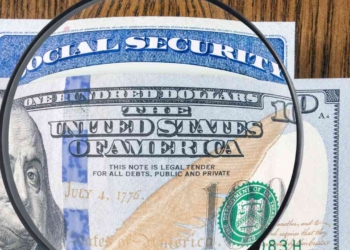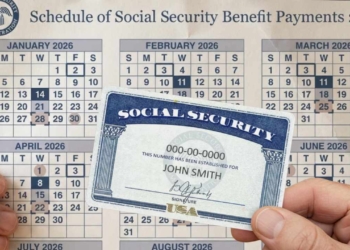In August 2025, Supplemental Security Income (SSI) recipients will receive two payments: one on August 1 and another on August 29. Why is that? Is this extra money? Are we getting a thirteenth check? It’s normal, no, and no (in that order).
No payment will be issued in September due to a schedule adjustment by the Social Security Administration (SSA). This change responds to Labor Day coinciding with September’s first day, a federal holiday requiring advanced distribution.
Why does the SSA advances payment dates for SSI benefits
The SSA follows a fixed protocol: when the first of a month falls on a weekend or holiday, payments move to the prior month’s last business day. In 2025, September 1 is Monday but conflicts with the holiday, so the payment shifts to August 29.
This doesn’t increase annual benefits, only temporarily rearranges funds, while the total amount of payments is 12 every year.
SSDI payment schedule and 2025 exceptions
The adjustment isn’t limited to August and September. In October 2025, the regular payment occurs on October 1, while November’s payment advances to October 31 because November 1 is a Saturday. Similarly, in December 2025, January 2026’s payment will distribute on December 31 due to the New Year’s Day holiday.
While the schedule may cause confusion, it doesn’t alter total annual allocations. The SSA emphasizes these are logistical changes only, not affecting eligibility calculations or program requirements. Those relying solely on SSI must plan ahead to maintain stability during payment-free months.
Maximum amounts and 2025 eligibility criteria for SSI benefits
2025 SSI payments include a 2.5% cost-of-living adjustment (COLA) based on inflation projections. Federal maximums are:
- Individuals: up to $967 monthly.
- Eligible couples: up to $1,450 monthly.
Some states like California or New York add supplements to these amounts, increasing total payments. However, amounts vary by jurisdiction and require local verification. Eligibility depends on factors including income, resources, and medical status or age.
To qualify, applicants must have income below $2,019 monthly (if employed) and meet age (65+) or disability criteria. Children with severe medical conditions may also access the program. The SSA conducts periodic reviews to confirm continued eligibility.
Advanced payments may temporarily affect participation in state/federal aid programs tied to income limits. Initiatives like SNAP or Medicaid consider bank balances when determining eligibility, so August’s dual deposit could skew calculations.
The SSA suggests consulting social workers or financial advisors to prevent issues. It also recommends budgeting tools like separate accounts or spending plans to allocate funds between August and September. This is particularly critical for those without secondary income.
Exact payment dates and updated amounts are available on the official SSA website. Beneficiaries may create accounts at ssa.gov for personalized alerts and financial planning resources.







